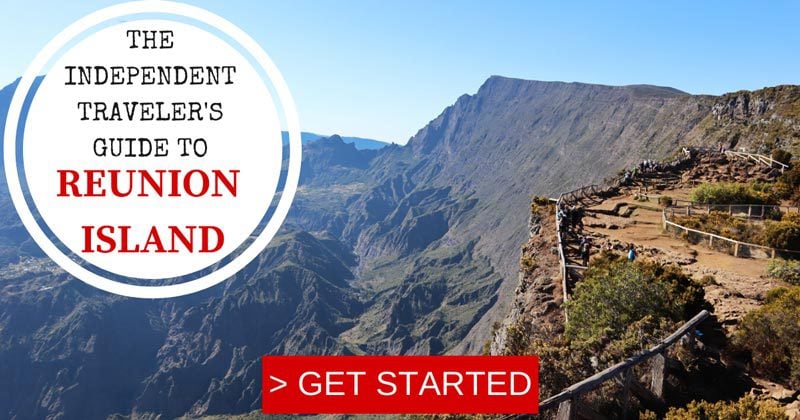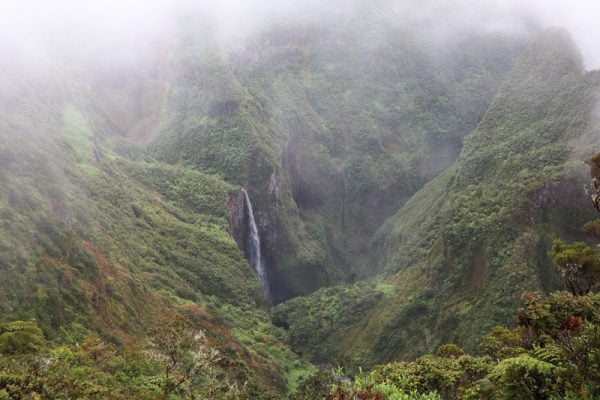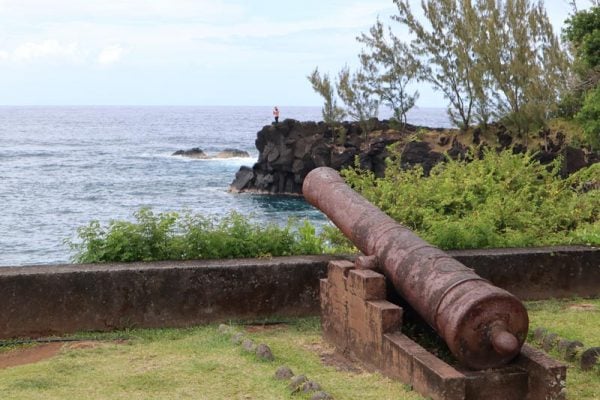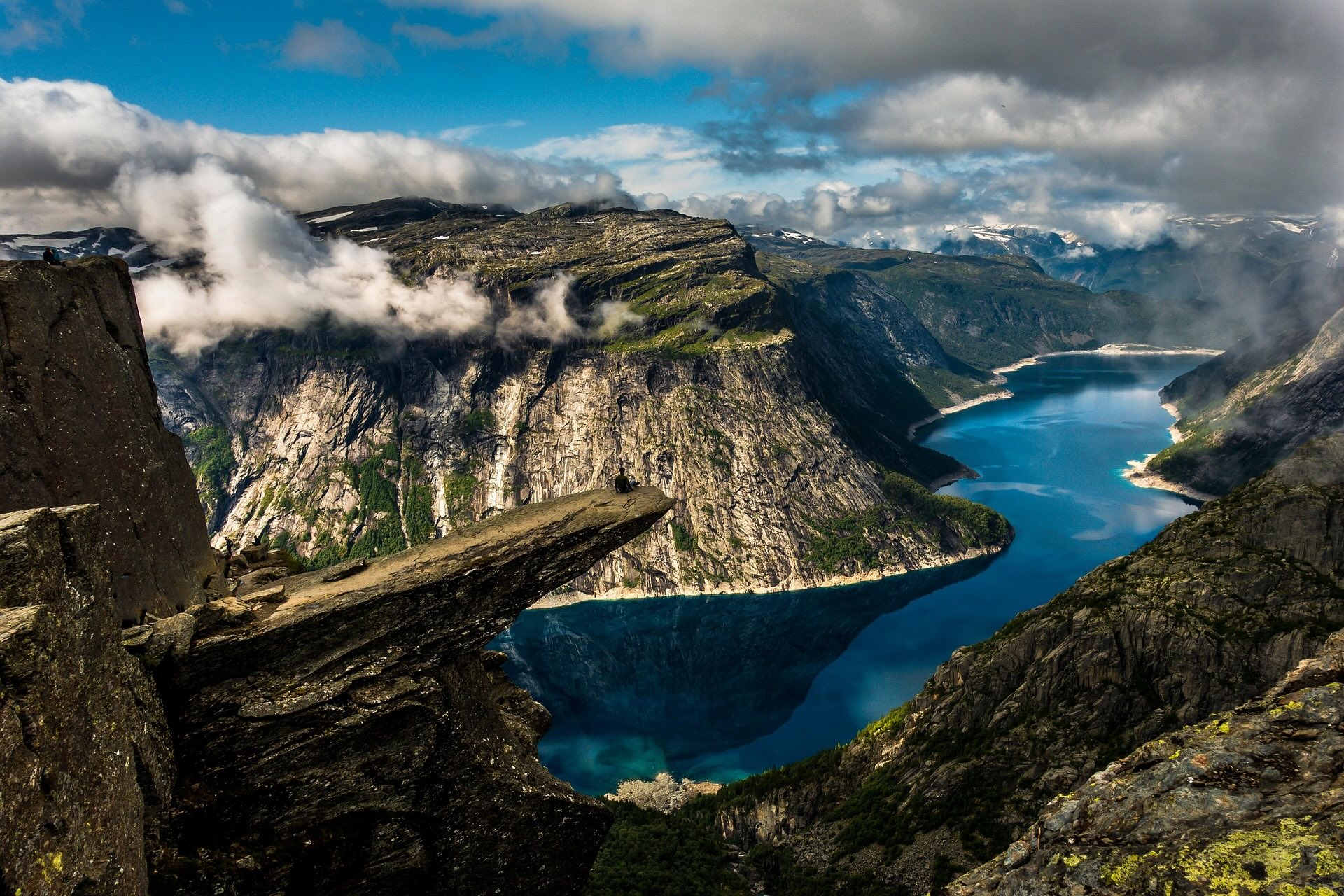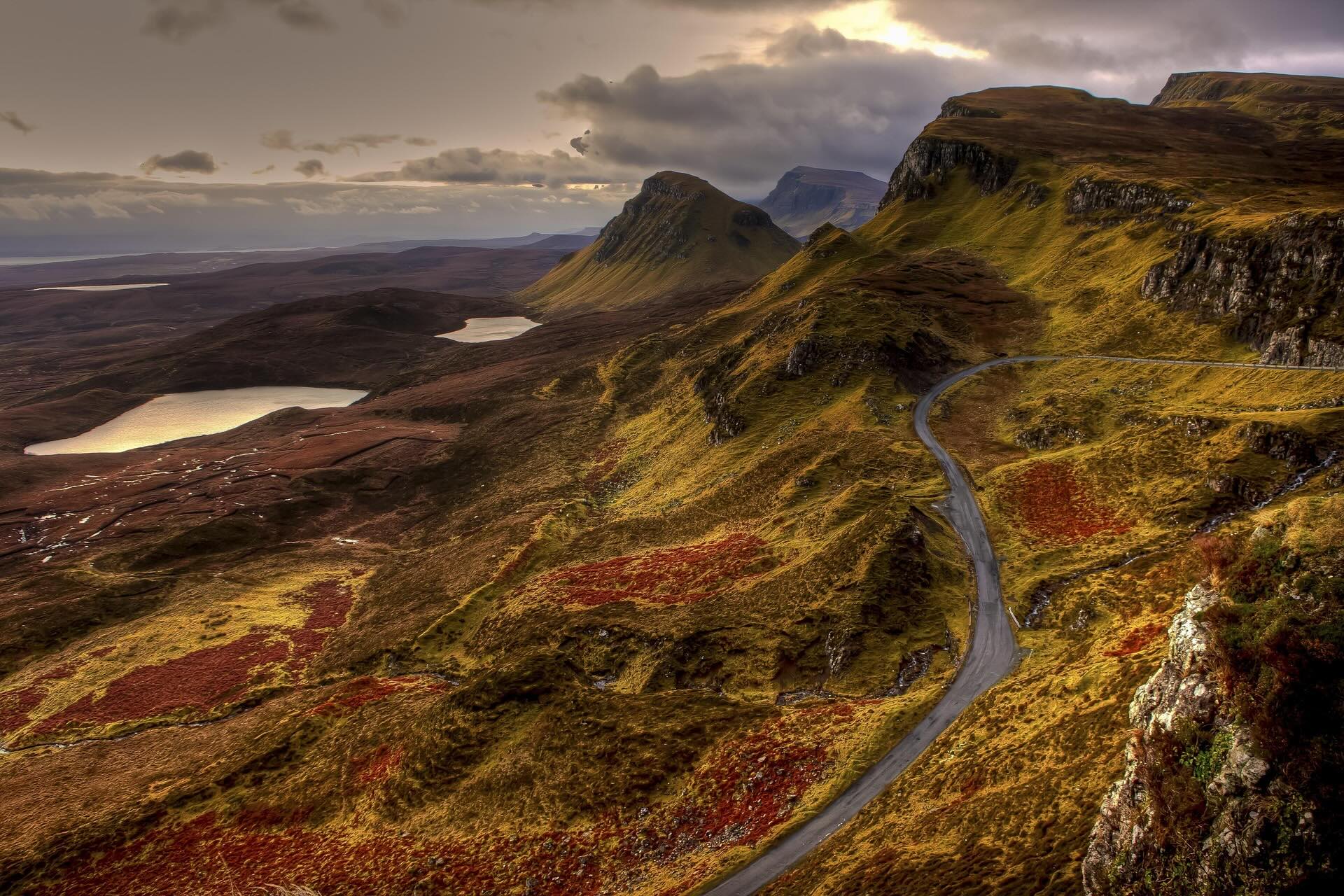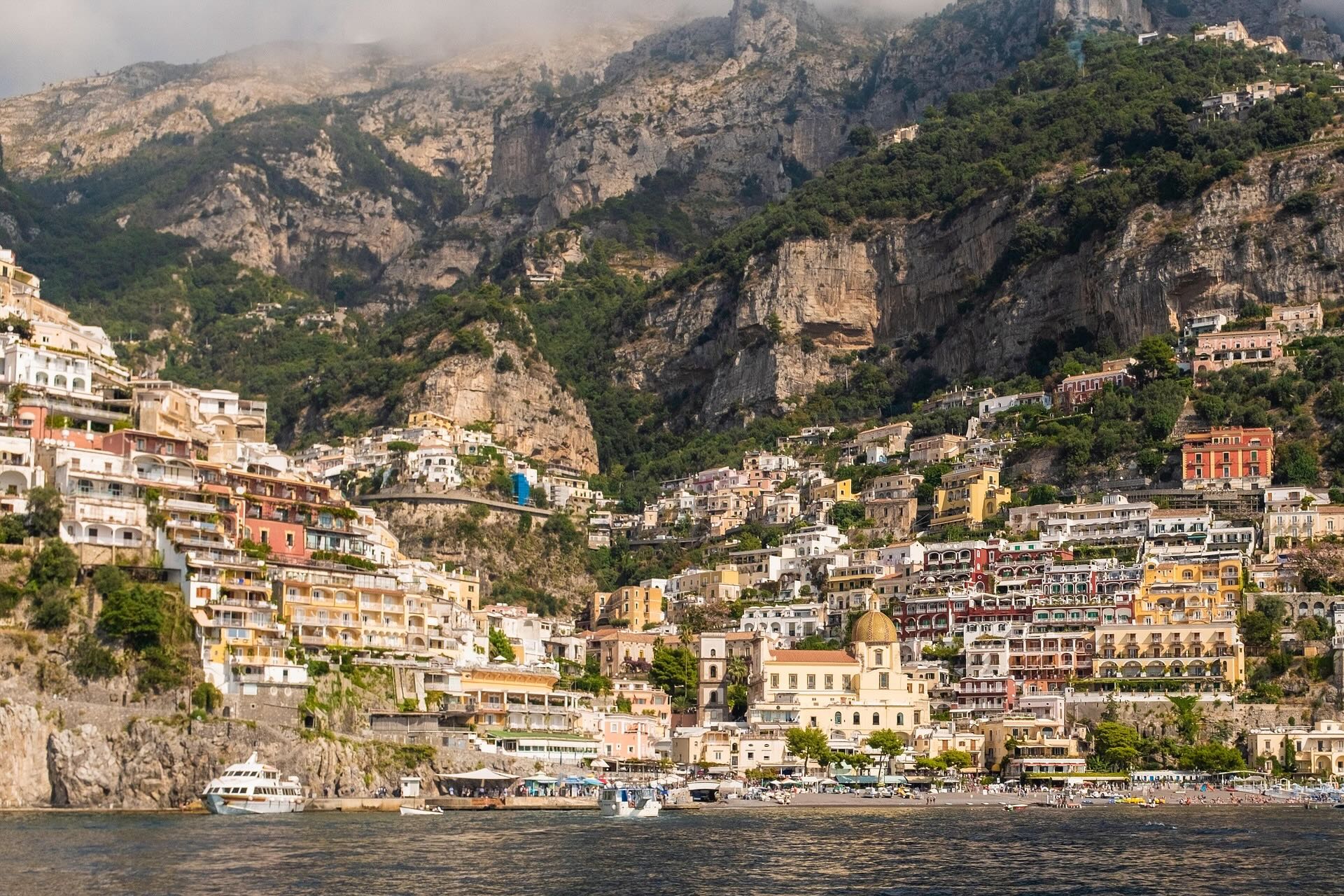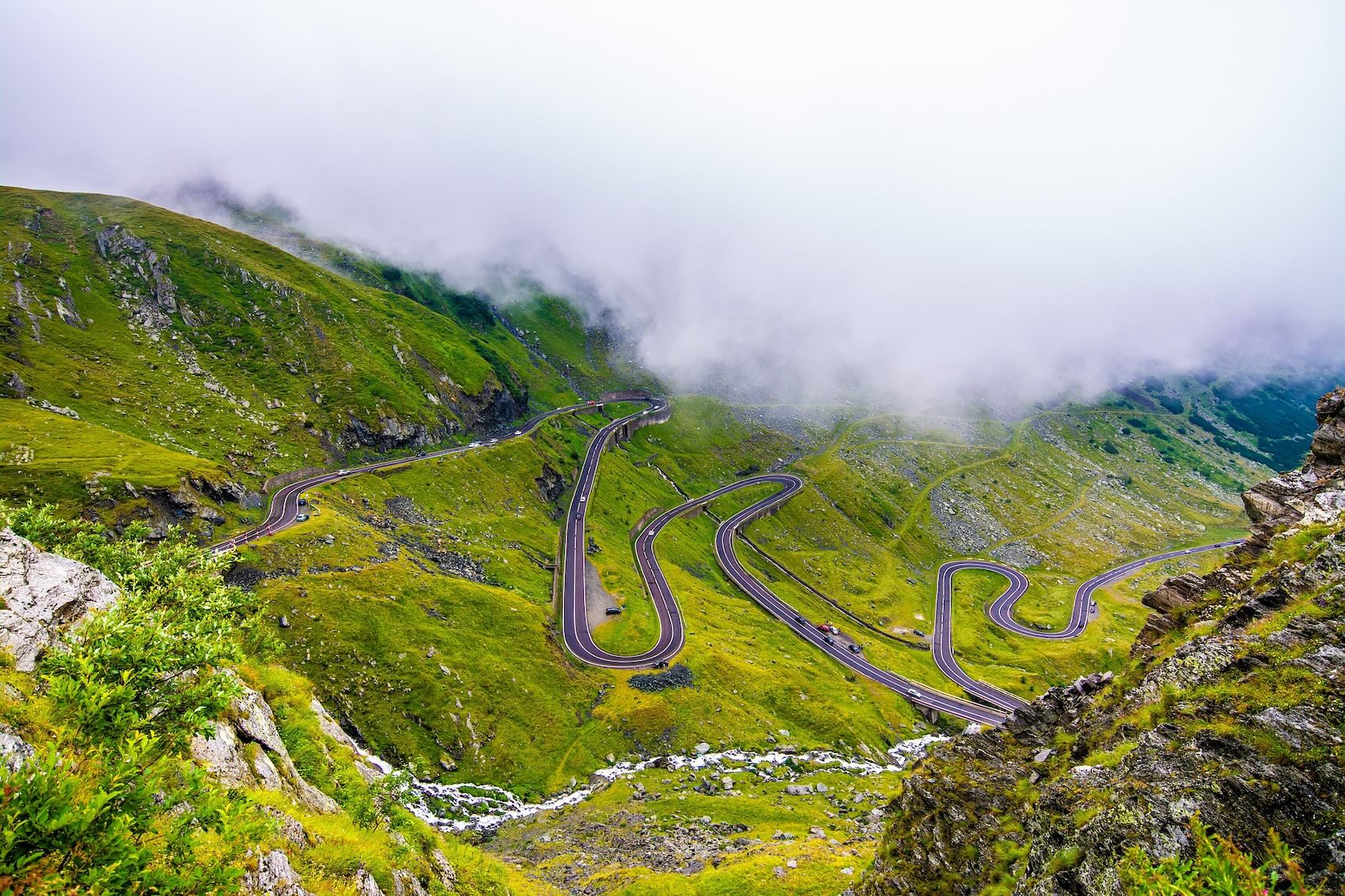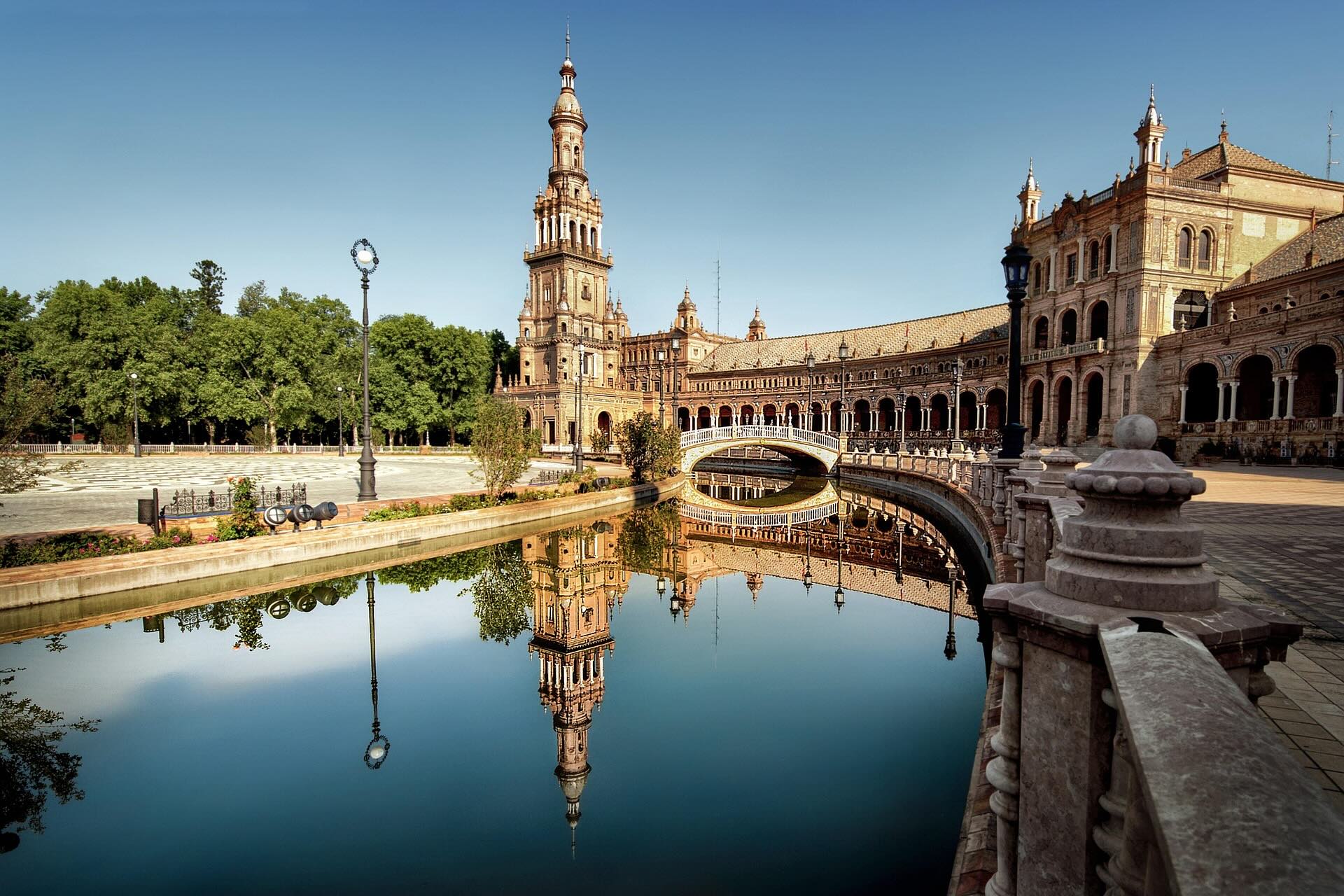Reunion Island Travel Tips
A trip to Reunion Island is a journey to one of the most majestic and diverse destinations in the world. The active and curious traveler will have a hard time catching up on sleep with so much to see and do. Before planning your holiday, here’s an in-depth list of essential Reunion Island travel tips.
About this Guide
These essential Reunion Island travel tips are based on my experience and extensive research before and during the trip. I visited Reunion Island in late September for two weeks on a couple’s vacation, where the goal was to experience the island entirely. Throughout our visit, we traveled 1,322km around the island and its interior, not taking into account over 100km of hiking.
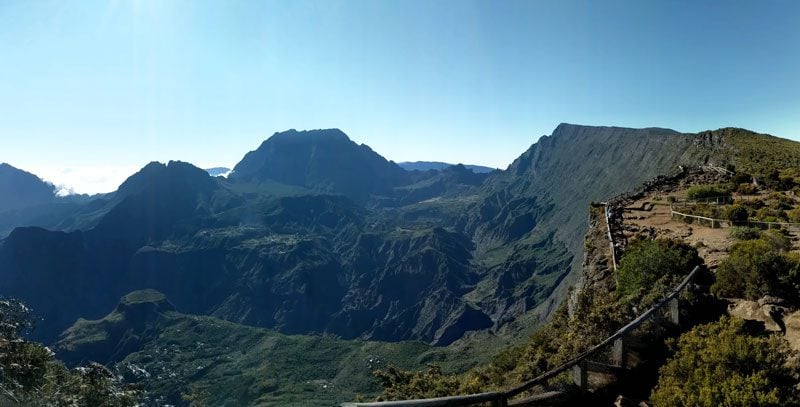
Reunion Island Travel Guide
Planning or thinking about a trip to Reunion Island? Have a look at additional Reunion Island travel guides, including day-by-day itineraries and the best hikes on Reunion Island. For a quick read, here are the top 10 things to do in Reunion Island.
Quick Tour of Reunion Island
Here’s a quick video tour of Reunion Island!
When is the Best Time to Visit Reunion Island
Though many of the world’s microclimates can be experienced over a single trip to Reunion Island, there are basically two seasons to consider when planning your visit.
Reunion Island’s Dry Season
The Austral (southern) dry season runs between April and November. Local standards consider it as the winter. Temperatures are quite mild at this time but still warm enough for some beach time on a sunny day. This is the best time to visit Reunion Island, especially for hiking, since rain is less plentiful and the mountainous interior experiences less cloud cover. Between June and October, humpback whales visit the island’s west coast, a perfect time for some whale watching (and perhaps even swimming with whales).
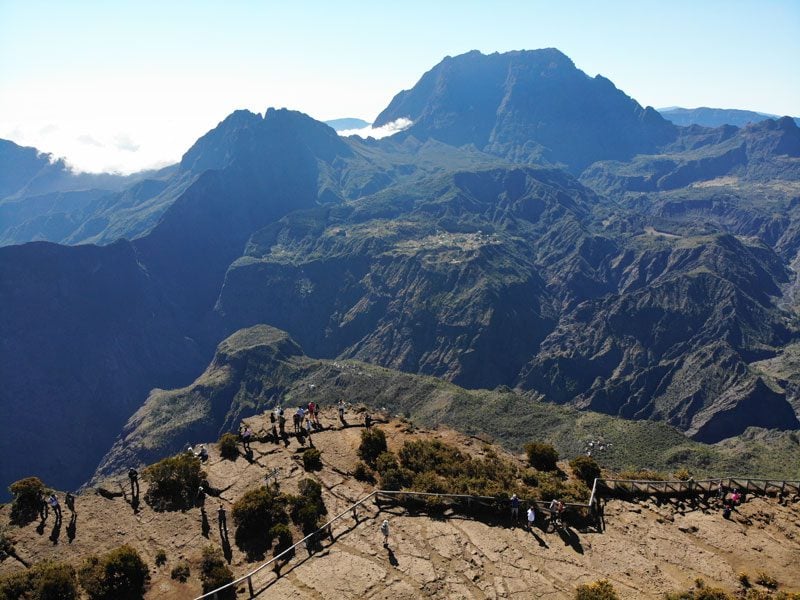
Reunion Island’s Wet Season
The southern wet season runs between December and April and is considered summer on Reunion Island. Temperatures are much higher but not in an oppressive way, though they can reach 30 degrees and above in some areas. It doesn’t always rain, but rain is more frequent and present even in generally drier spots. Hiking can be quite disappointing at this time due to muddy trails and cloud cover, not to mention dangerous in some cases. Cyclones are also a factor and are more frequent between January and March, even if hitting the island as weaker tropical storms.
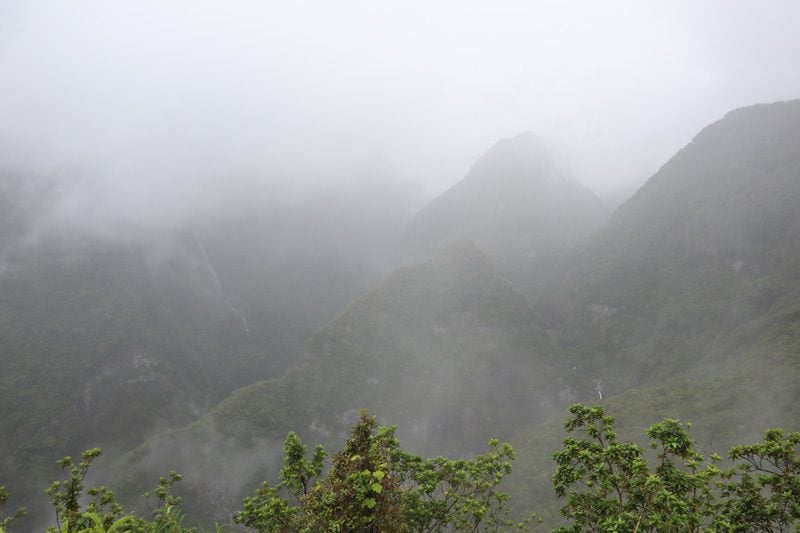
Additional Factors
The shoulder season in Reunion Island (April and late October/November) is also an optimal time to visit. Since seasons don’t run like a Swiss clock, especially in the tropics, remember that the “shoulder months” can experience unstable weather. It’s also best to avoid the French holiday seasons when planning your visit (especially school holidays), as the island is busy with families traveling around and French tourists coming from abroad.
The best source of Reunion Island weather information is the Meteo France website which offers the most accurate prediction of weather per region.
Preparing for Your Trip to Reunion Island
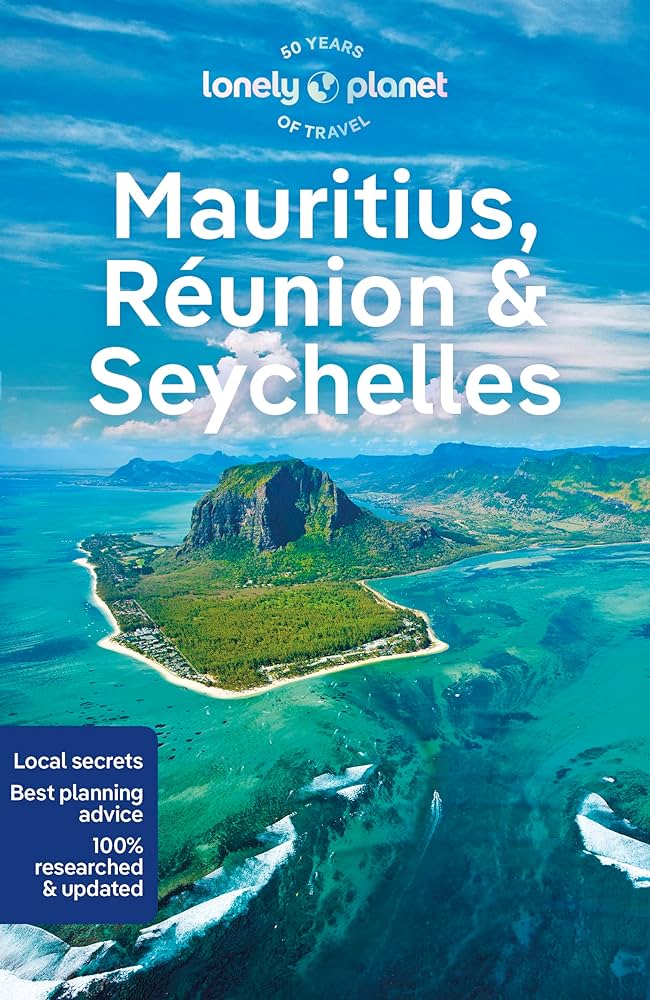
- I recommend purchasing your own copy of the Lonely Planet Guide to Mauritius, Reunion and Seychelles. In the months prior to the trip, it helped me research the various points of interest and get aligned on an itinerary that was right for me. In addition, it makes even more sense if pairing Reunion with either Seychelles or Mauritius.
- The official Reunion Island Tourism website is also a very good source of information, especially for hiking. Once on the ground, every region has its own tourism office which you can visit and get advice, maps and brochures. However, English is not always spoken at the local tourism offices.
- It’s worth reading about Reunion island’s unique geology and history. I’ve prepared a brief post highlighting the most interesting aspects.
- To really get excited about the diversity and extremity of the landscape, pinpoint Reunion Island on Google Earth, switch to 2D and head on a virtual tour of the island.
- A trip to Reunion Island is all about the outdoors and the beaches, so having the right gear is a key to success. The island is home to a multitude of microclimates and is a photographer’s heaven. Be sure to review the X Days In Y Packing List for clothing, apparel and photography essentials.
How to get to Reunion Island
The easiest way to get to Reunion Island is by plane, though several cruise lines visit the island as part of a broader itinerary in the region. At the time of updating this guide, here’s a list of the various ways to reach Reunion Island:
Reunion Island from Europe
The best way for European visitors to reach Reunion Island is via Paris (Orly airport), with daily flights operated by Air France, Corsair, and the low-cost long-haul carrier French Bee. From Charles de Gaulle Airport, Air Austral seems to operate direct flights to Reunion Island. The flight time is just under 11 hours.
Reunion Island from Africa
Air Austral operates (non-daily) direct flights to/from Johannesburg, Mayotte, Madagascar, Seychelles, Mauritius and Comoros. You can also use Air Mauritius to get to Reunion Island from Mauritius.
If you have the extra time, you can easily pair Reunion Island with a visit to either Seychelles or Mauritius. If traveling from/to Europe, be sure to leave enough buffer time in case of delays or connection logistics (changing terminals or having to check luggage if flying on different airlines). It might make sense to spend an extra night in Paris on both legs of the journey. I personally stayed at the Ibis Orly Airport.
Reunion Island’s Microclimates
One of the best Reunion Island travel tips I can provide is to get to know the island’s climate. For a relatively small island, Reunion Island is one of the most diverse destinations you’ll ever visit, and that includes the local weather. The island’s position in the Indian Ocean, its mountainous terrain, and its three deep cirques (amphitheater-like valleys formed by erosion) all combine to play an essential role in your travel planning, where the temperature difference can be up to 12 degrees between the mountains and the coast. Here’s an overview of what to expect.
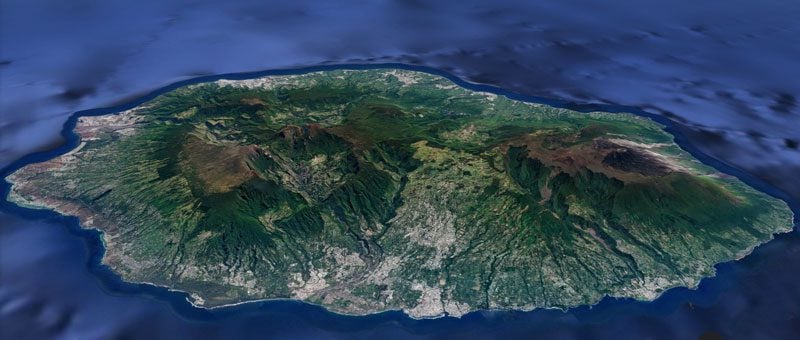
Reunion Island’s East Coast
The windward (east) coast roughly stretches from St-Andre to St-Philippe. It is Reunion Island’s wet coast, directly facing the trade winds and often experiencing light or heavy drizzle, particularly in the late mornings and afternoons. It doesn’t mean it always rains, but you should be prepared for wet and cloudy weather at some point during the day.
The East Coast Highlands
In a matter of a few miles uphill from the coast, the landscape changes, and the coastal plain gradually begins to rise to mountains covered with tropical forests. Deep gorges and towering waterfalls characterize the mountainous landscape. This is a wet and spongy world, with some areas seeing as much as 11 meters of annual rainfall!
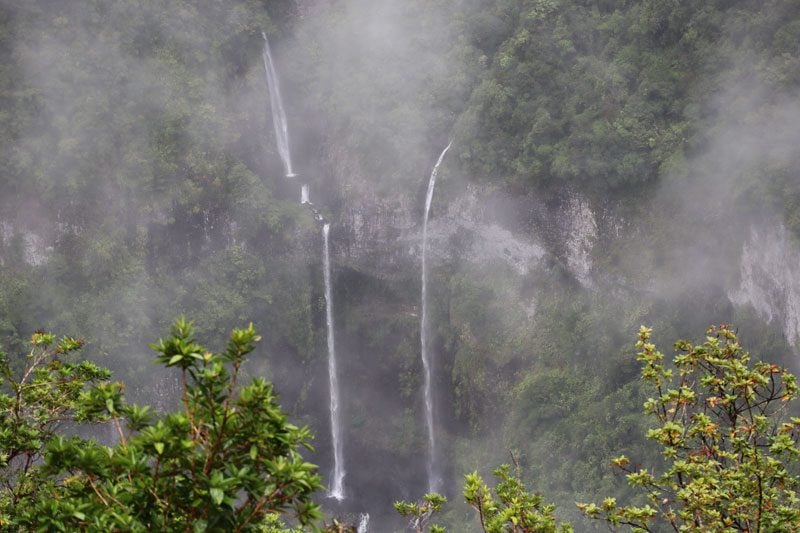
Reunion Island’s West Coast
The leeward (west) coast is sheltered from the trade winds by mountains over 2,000 meters high. The west coast of Reunion Island experiences a much more stable and sunny climate throughout the year. Certain coast stretches can even resemble an African savannah during the dry season’s height. The west coast is also home to the island’s lagoon, sheltered by a coral reef and its top beaches. Beyond the reef, the sea quickly drops to the depths, making for an ideal habitat for schools of tuna and barracuda and whales in season.
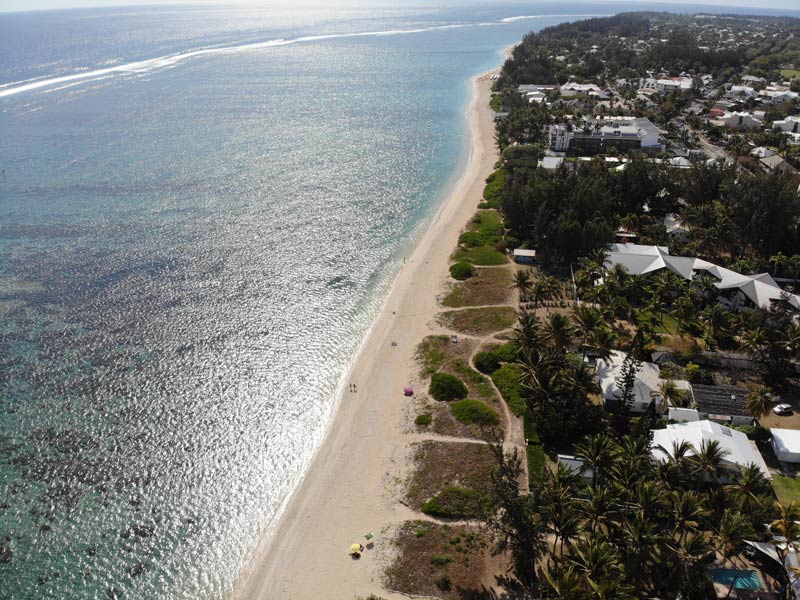
The High Plains
Reunion Island’s high plains join the two volcanic massifs (Piton des Neiges and Piton de la Fournaise). They begin from about 400 meters in altitude and cover large island sections. This landscape is much cooler and less tropical, though variations between east and west exist. The western plain (la Plaine des Cafres) is cold, windswept, and used for cattle raising, while the eastern plain (la Plaine des Palmistes) is damp and lush in vegetation.
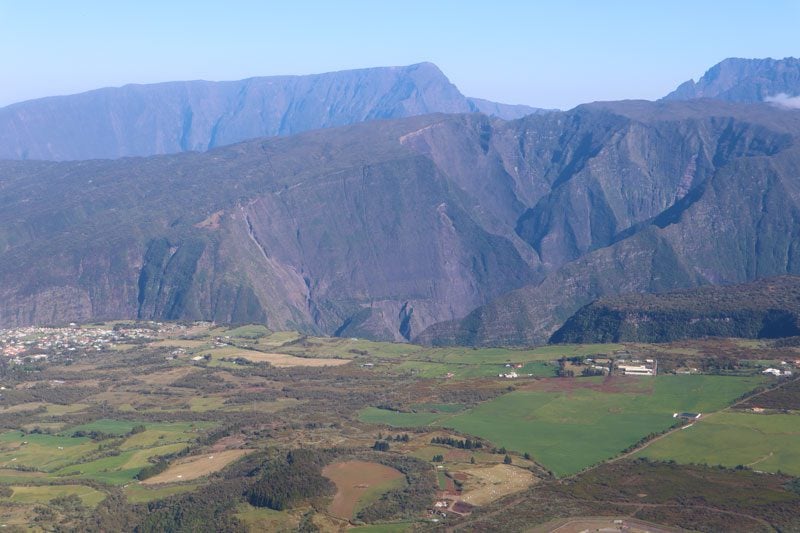
The Summits
The high plains lead to the very top of Reunion Island, a land of breathtaking peaks where one forgets they’re on a tropical island. Capped by the summit of Piton des Neiges at an altitude of 3069m, it’s a land of contrast, where icy nights give way to hot days under the sun and even the occasional snowstorm! The series of peaks rest atop 3km of ramparts (high walls rising from the cirques), and some spots are so out of reach that only in 2011 did humans set foot there for the first time. Surprisingly, this barren land is home to endemic plant species found nowhere else on Earth.
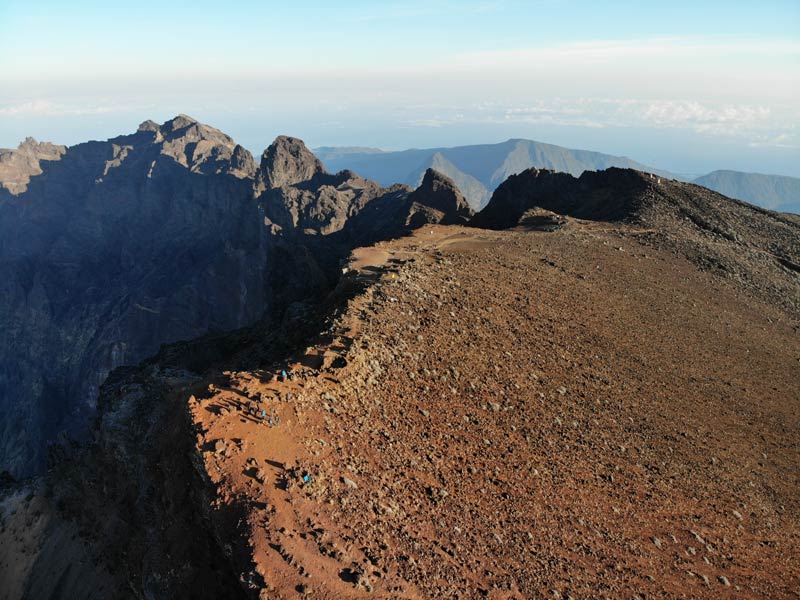
Reunion Island’s Cirques
Reunion Island’s three cirques are massive calderas created when the once-active magma chambers that formed the Piton des Neiges emptied their contents and fell in on themselves. They are essentially amphitheater-like valleys formed by hundreds of thousands of years of erosion. Each cirque has its unique microclimate, with Cirque de Salazie being the wettest, Cirque de Cilaos being the driest, and Cirque de Mafate in between. Especially with the latter two cirques, the weather inside can get quite hot and with very little shade. Usually, at around noon, clouds cover the top of the rampart walls that encircle the valley, and the cirque is “cut off” from the outside world in the visible sense of things.
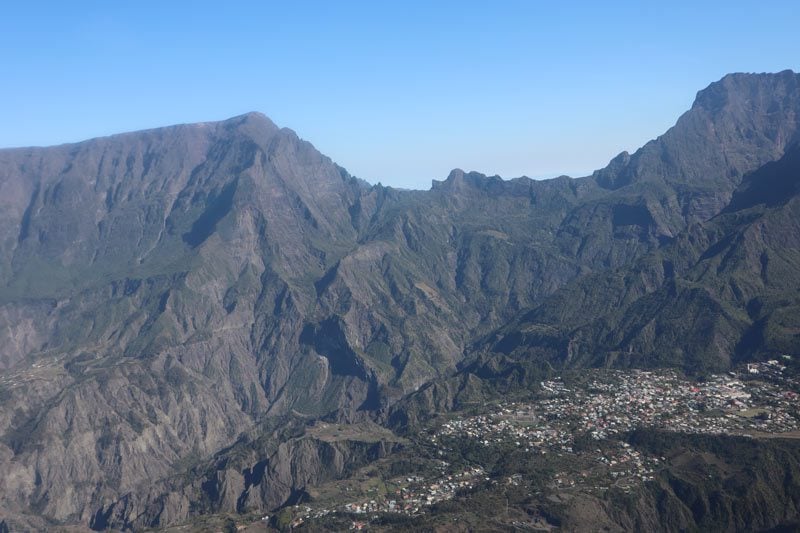
The Southern Lava Field
The ever-present volcanic activity of Reunion Island is made real in the Mars-like southern lava field, completely barren and exposed to the elements. On a sunny day, this area is as hot as it gets.
Spoken Languages in Reunion Island
French is the official language of Reunion Island, but some islanders also speak a local dialect known as Reunion Creole. Many residents, even ones engaged in tourism, do not speak English. A little bit of French will go a long way. I recommend downloading an offline translation of French to your language in Google Translate. It might get you out of tricky situations.
What is the Average Cost in Reunion Island
The currency in Reunion Island is the Euro, and prices are slightly higher than traveling in France during peak season. If you want to save on costs, Reunion Island offers a vast range of self-catering accommodations so you can cook meals, do your laundry, etc. Here’s a quick breakdown of key items:
- Gasoline: obviously fluctuates but comparable with prices in Europe.
- A meal in a restaurant: between €20-25 for a main dinner course
- Baguette sandwich: €5
- Drinks: €4 for a small bottle of beer, €6 for a glass of wine
- Bed and breakfasts: €80/night (midrange) €200/night (boutique)
- Car rental: €50/day
- Diving: €65/dive
- Whale watching: €35
Where to Stay on Reunion Island
In every section of the Reunion Island sample itinerary, I’ve recommended specific places to stay based on my experience. In this section, I’ll discuss in general terms the ins and outs of accommodations in Reunion Island.
By far, the top choices in Reunion Island are bed and breakfasts, particularly “boutique-style” B&Bs that blend in with their surroundings. There are few resorts and large hotels on the island, and they aren’t particularly appealing, in my opinion.
For longer stays in a specific region, you can also rent fully-furnished vacation homes, ranging from the simple to the luxurious. On the budget side, simple guesthouses in a cabin-style environment (locally known as gites) are widely available, and camping is also possible at about 15 campsites around the island.
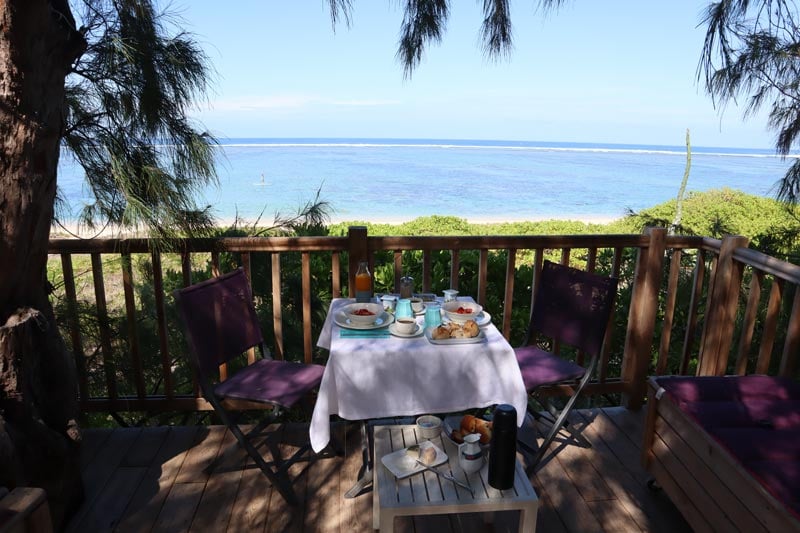
Generally speaking, the beach towns along the lagoon are the most appealing areas to base yourself at when exploring the east coast (including the mountains without going inside the cirques). My personal top choice is la Saline-les-Baines, a lovely seaside community on the shore of the prettiest stretch of beach on this side of the island. Basing yourself here enables you to explore the mountains in the morning, go on whale-watching excursions or diving, and spend a lazy afternoon at the beach.
Varying municipal taxes must be paid at the time of check-in or check out and paid on the spot even if you prepaid for your accommodation. The cost ranges from less than 1€ per night and up to ~ 5%, depending on the region.
Hiking Cabins in Reunion Island
Hiking cabins are worthy of their own section since hiking is the main activity on Reunion Island. Along popular hiking trails, the island has a network of overnight cabins laid out at strategic points. These can be at the crossroads of one trail with another or en route to summits like in the case of the Piton des Neiges. The local community operates these cabins and can be quite accommodating, considering their remote location.
You must book your accommodation as far in advance as possible as space is limited and the island is often visited by hiking clubs from Europe who travel in large groups. You also need to pack accordingly based on what the cabin offers (or doesn’t) and the type of hike (see the “what to pack” section of this guide). Cabins also sell food and beverages (cash only), and some offer breakfast and dinner. If privacy and comfort are of concern, it might be a bit challenging, but remember that it’s just a means to experience the incredible nature of the island. Arrive early, well before sunset, to be able to choose the bed of your choice.
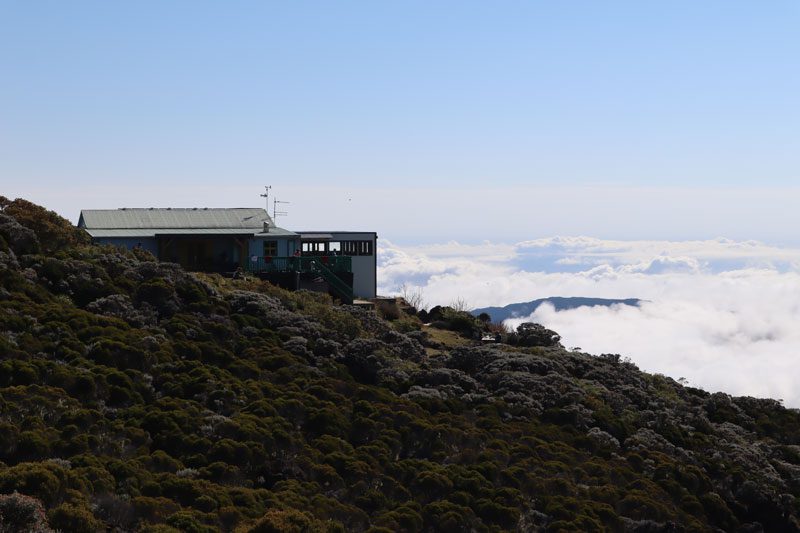
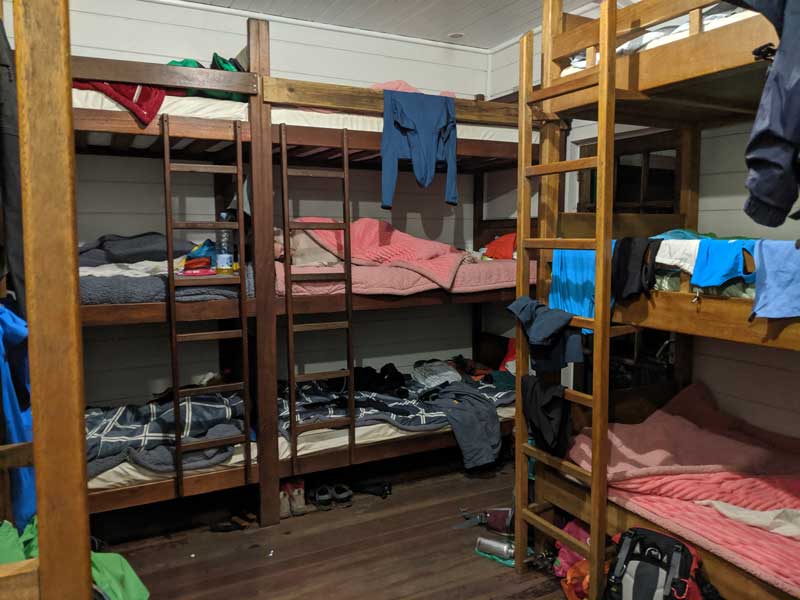
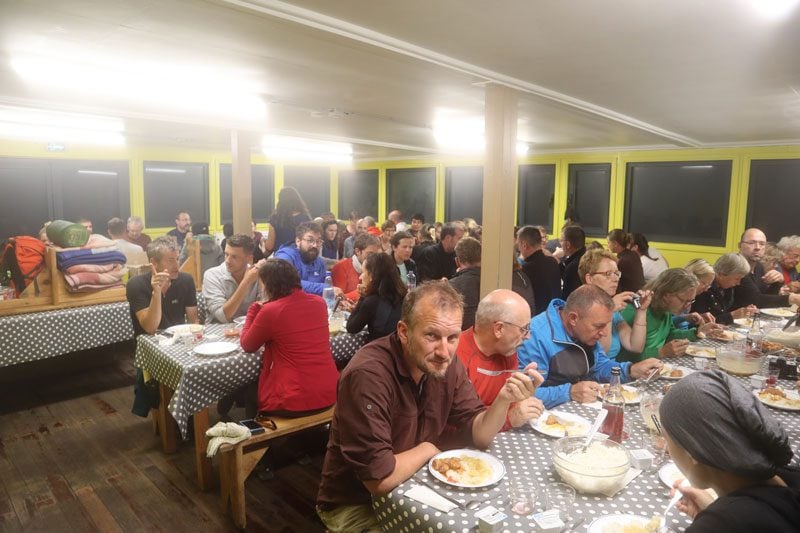
How to Get Around Reunion Island
Without a doubt, you should rent a car in Reunion Island from the moment you land until the moment you depart. Car rental prices are very competitive, and there is no better way to get around Reunion Island than with a car. That said, the island’s network of buses will get you pretty much to any point of interest. You just need to figure out the line you need from the website or from locals (or local tourism offices) and get a corresponding brochure with all the scheduled times for every stop.
Driving in Reunion Island
Having a car on Reunion Island allows visitors to embark on exceptional road trips almost every day of their holiday. The scenery is out of this world, and frequent stops can be made to absorb everything.
The Route des Tamarins, the main artery connecting St-Paul with Etang-Sale on the island’s west coast is worth mentioning. Opening in 2009, it’s a true engineering marvel, 25 years in the making and taking five years to construct. This €1.1B project spans 34km of a seemingly impenetrable coastline, crossing 123 ravines with four exceptionally long viaducts rising above natural obstacles, 23 bridges, three tunnels, and nine interchanges. It is best appreciated from the air but is already inadequate in coping with population growth. Currently in the works is a new mega project connecting the main port (Le Port) with St-Denis via a mega-highway built over the ocean in a continuous viaduct!
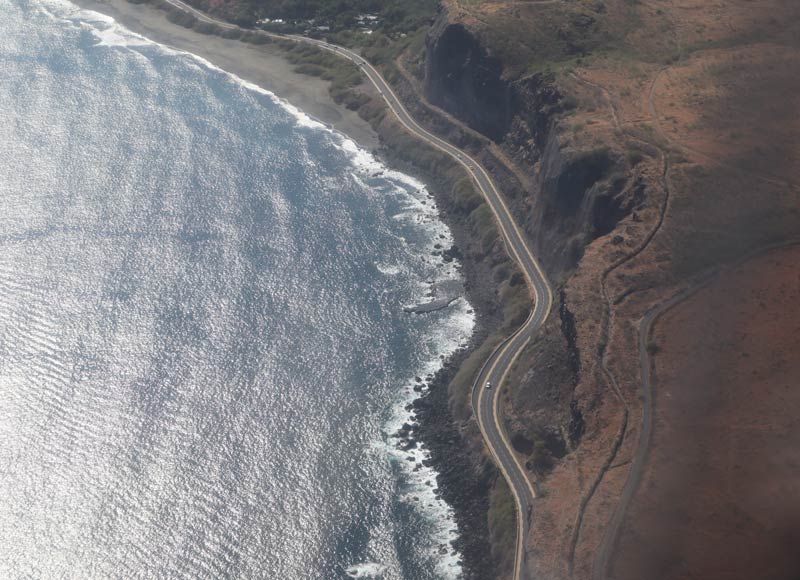
- In Reunion Island, they drive on the right side of the road, just like in France.
- It is important to take note of the various types of roads. Roads designated with the letter “N” mean they are national roads and can vary from proper highways to two-laned paved roads. Roads designated with the letter “D” are rural roads and are much more slow-going. They usually lead from the coastal areas to the mountains so there’s a great difference in altitude and terrain to be negotiated. Expect travel time to be longer, to share the road with agricultural vehicles and to face challenging and uphill turns. Roads designated with the letters “RF” are forestry roads and are usually the final stretch of road to various trailheads and parks. Most of them are paved but are not as well maintained as other types of roads.
- Unless you absolutely love driving a manual car, I strongly recommend paying extra for an automatic car. As soon as you leave the flat coast, Reunion Island’s roads become narrow and winding with some exceptionally challenging roads inside the cirques that include blind turns.
- I recommend renting a car with a more powerful engine than you would normally go for. This will really help when you’re slowly going uphill and need to sharply turn.
- In addition, take a car that can fit all your luggage in the trunk for days where you change accommodations but in between go off on excursions or hikes.
- Do yourself a favor and pay for extra car rental insurance considering the challenging driving on the island.
- It’s best to bring an international driver’s license.
- Be sure to thoroughly inspect and photograph your vehicle before signing the car hire documents.
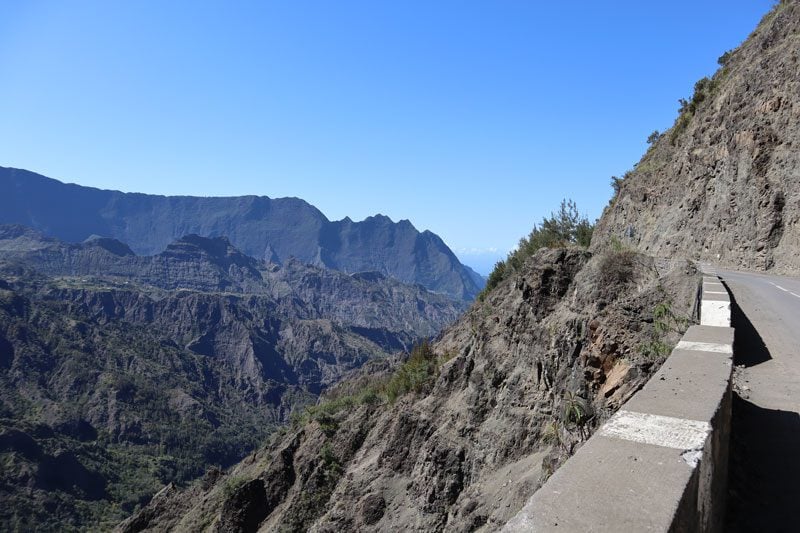
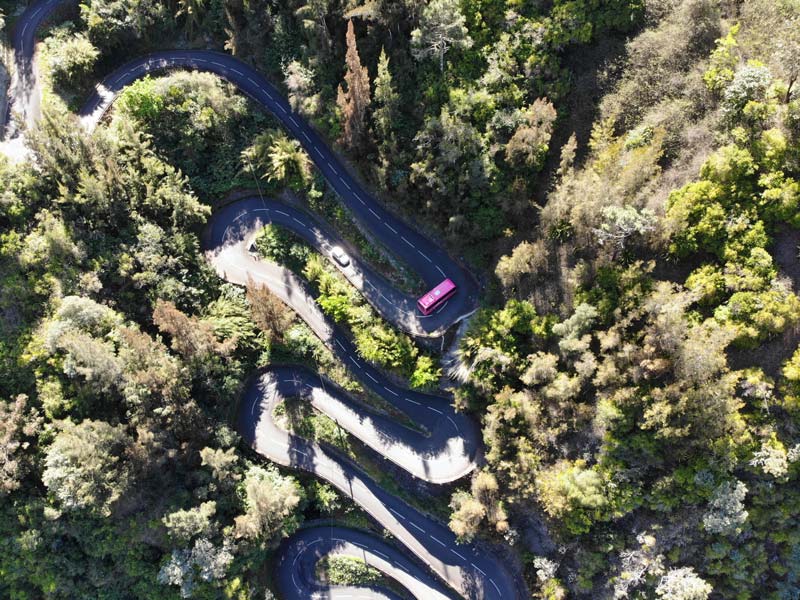
(1) In addition to physical driving maps offered by car rental companies, download an offline Google Map of Reunion Island with all the points of interest pre-marked and to purchase a local SIM card with data. This will add much efficiency to getting around the island. (2) See the “tips for staying safe in Reunion Island” for additional driving tips.
Hiking in Reunion Island
With more than 1,000km of marked trails, Reunion Island is a magnet for outdoor enthusiasts. In fact, it’s a very popular destination, especially with Germans and Austrians who come here just for hiking. Here are a few essential hiking tips, but also be sure to read through this list of the best hikes in Reunion Island.
Navigation
Reunion Island’s hiking trails are well marked and signposted, but some are part of an extended network, and trail signs might only mention the “endpoints” on either side (like on a subway line). Be sure to understand “the big picture.”
It’s also worth visiting the official Reunion Island tourism website. It’s an excellent resource for hikes on all levels and all island sections. Once you have your hiking shortlist, download all trail maps to your phone using an AllTrails Pro account so you can easily navigate even offline.
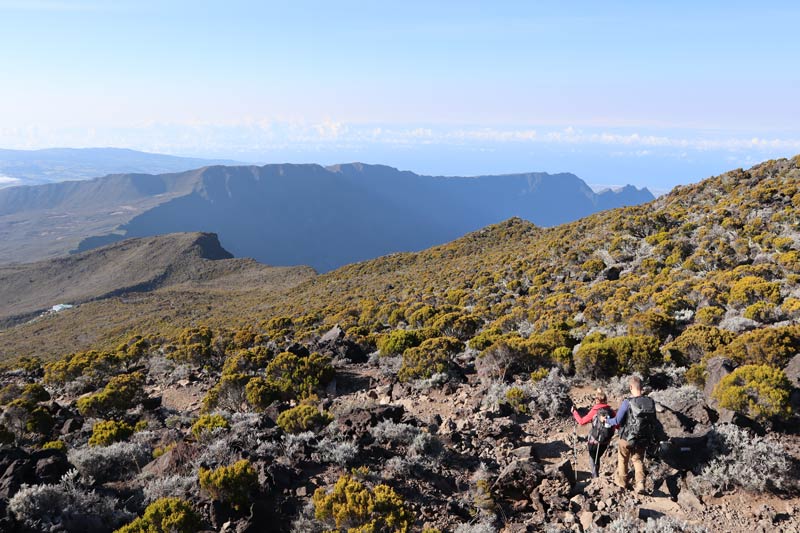
Packing
Be sure to pack more water and snacks than you might need. The weather can be warm, and the hikes are harder than you’re used to. Unless the weather forecast calls for all-day sun throughout the island, be prepared for changing weather and temperatures. Be sure to read extensively about your hike and pack accordingly. Always be prepared for wet and cold weather in the mountains. The right gear can make a difference (see “What to pack” section).
Start Early
Mornings are the clearest on most tropical high islands, so plan to be at the trailheads no later than 10 am (I recommend starting at 8 am if possible).
Multi-Day Hikes
If the hike requires an overnight stay, book your stay well in advance in one of the official cabins and pack accordingly (see “what to pack” section). Dinners can usually be paid for on the spot. Leaving your car at the trailheads is OK, but for overnight hikes, it is debatable. We used the bus to get to/from the Piton des Neiges trailhead, but, in retrospect, we should have taken the car despite mixed recommendations.
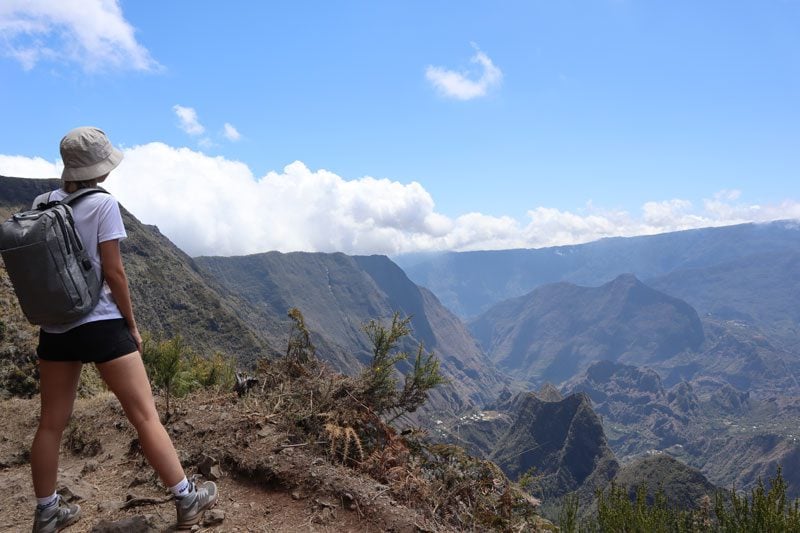
Planning Your Day
Except for west coast beaches (particularly the lagoon area), mornings on Reunion Island are usually the best time for activity. For active travelers, the name of the game is getting an early start to the day (get going by 8 am or earlier), as it is really disappointing to drive or hike to a scenic lookout only for it to be covered in clouds (and it does happen).
When we explored Reunion Island during late September/early October, the weather was quite good apart from one rainy day across the island, but it was always the case that it got cloudy by 11 am. After a couple of days, we got the hang of things and planned accordingly (this includes considering driving times).
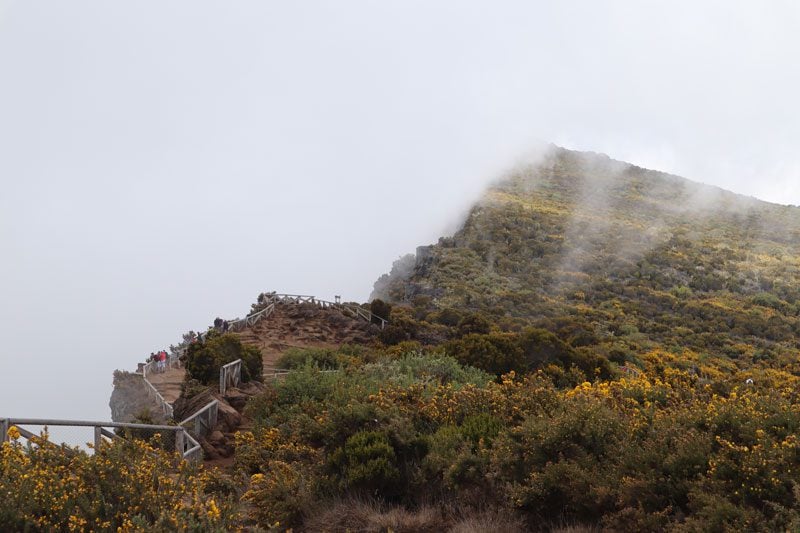
On Sundays, the popular beaches are busy with locals and parking is hard to find. On Monday, many restaurants and snacks in Reunion Island are closed because they were open on Sunday.
Getting a Local SIM Card in Reunion Island
Having access to mobile data and being able to make local calls while on the road is incredibly helpful and adds significant efficiency to your trip. If you can score an adequate roaming package from your home carrier that specifically covers Reunion Island, go for it, but just be sure it’s valid in Reunion Island (not just France).
Getting a local SIM card in Reunion Island is a bit challenging as, when writing this guide, no local operator is allowed to sell to tourists at the airport. Hence, you must visit one of their locations, considering that not all shops are open on weekends.
I personally purchased a SIM card from SFR, which was open on a Sunday in St Paul. The card was 15€ and came with 5€ credit for either calls or 500MB of data (you need to choose one). I immediately topped it with 8€ of call credit (about 30 mins of local calls), but here’s where it gets complicated. I could not pre-purchase additional data and had to finish the 500MB before being able to top up (from an SFR retailer). The credit was valid for 12 days.
To summarize, it’s helpful to have the ability to make local calls and use data (for navigation or checking various local information), but expect things to not really cater to tourists. Maybe this will improve in the future, but this is another example of how mass tourism has yet to reach Reunion Island (thankfully).
eunion Island’s Beaches
Geologically speaking, Reunion Island is younger than neighboring Mauritius, so it does not yet enjoy so many white-sand beaches (this process takes a few million years). However, with 207km of coastline, you can still bask under the sun in about 20km of sandy beaches. The color of the sand can be white, black, or emerald, and the sea temperature never goes below 21 degrees.
The best beaches in Reunion Island are concentrated inside the lagoon on the island’s west coast and are mainly protected from sharks. Reunion Island is known as the world’s “shark attack capital,” so it’s important to only swim in beaches where it is safe to enter the water. Reunion Island is by no means a beach holiday destination, but you can still totally enjoy some beach time, just like we did during our two weeks on the island.
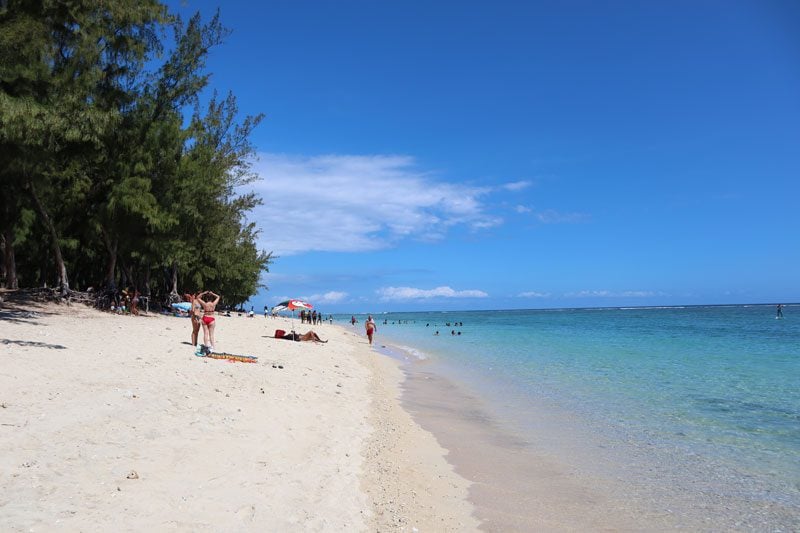
Scuba Diving & Excursions in Reunion Island
A vacation in Reunion Island is a thrilling experience with so much to see and do apart from hiking and hanging out at the beach. Here are a few ideas and tips. Also, check out the Two Weeks in Reunion Island sample itinerary for more in-depth information.
Excursions of any kind are prone to weather conditions. Even if it’s a nice day, ocean swells may cancel boat-related excursions. It’s best to call in advance to check the status and to always have a backup plan in case of cancellation. If you really have your heart set on a particular activity, book it for the very first day you’ll be staying in that region. That way, if canceled, you still have the following days to try again.
Scuba Diving
Most dive centers and dive sites on Reunion Island are between St-Gilles and St. Leu, though there are a few exceptional sites in the southern part of the island. After making many calls to different centers, I concluded that two-tank dives (i.e., diving twice on the same outing) are not really a possibility in Reunion Island, so expect just one dive per outing (either a morning or afternoon dive). This can obviously change and depends on many factors. All major accreditations are accepted but CMAS towers above all of them and is rewarded with the best dives, often found at depths of 35-40m.
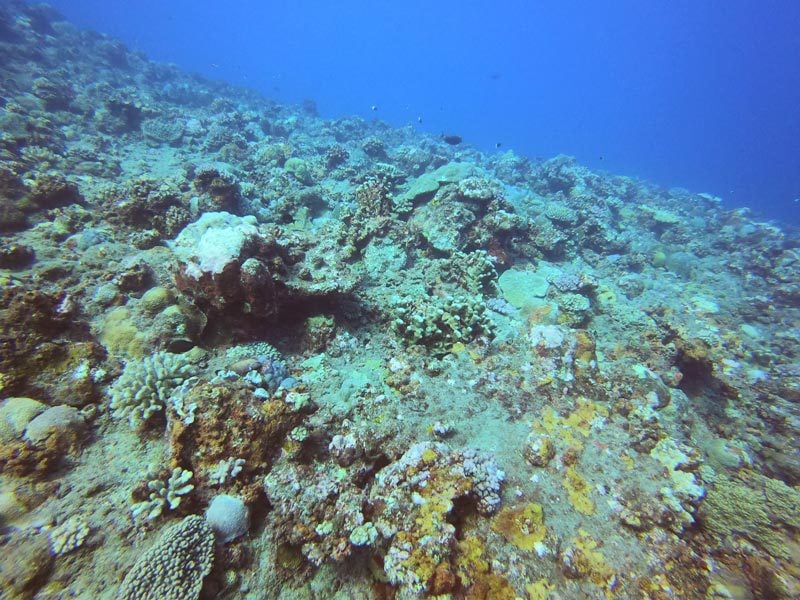
Snorkeling
The reef around la Saline-les-Bains is quite rewarding for a casual snorkel. It isn’t the Red Sea or French Polynesia, but you’re still on a tropical island, after all. You can also join guided snorkeling excursions to explore interesting areas of the lagoon offshore.
Dolphins & Whales
While dolphins are always present off Reunion Island’s shore, humpback whales visit the island’s west coast between June and October. Join a guided excursions to either do some dolphin and whale watching, or enter the water and swim with the gentle giants. Most dolphin and whale tours depart from St-Gilles.
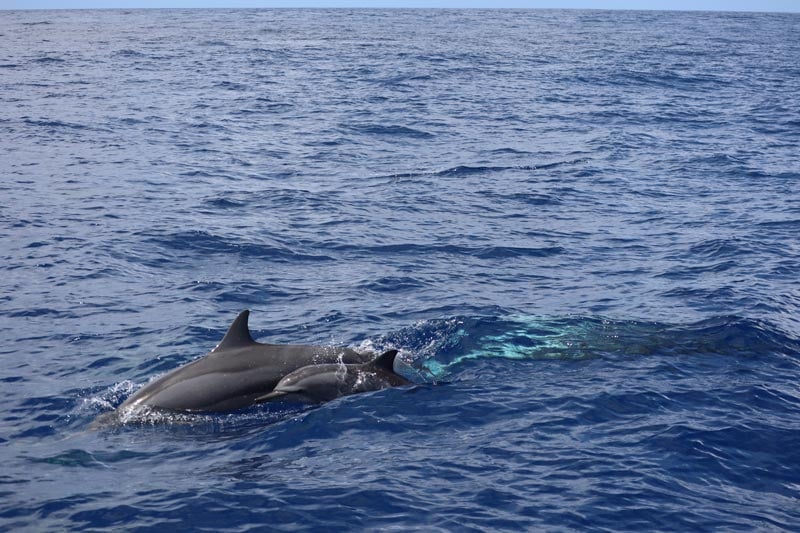
Scenic Flights
A scenic flight in Reunion Island is a great way to experience its majestic beauty. Scenic helicopter tours are the most appropriate (and expensive), but some outfits offer scenic flights on small aircraft. Due to the diversity of the island, it’s worth selecting a tour that flies above all sections of the island. Despite the high cost, I recommend investing in this special activity because it’s otherwise impossible to experience the dramatic scenery due to the rough terrain.
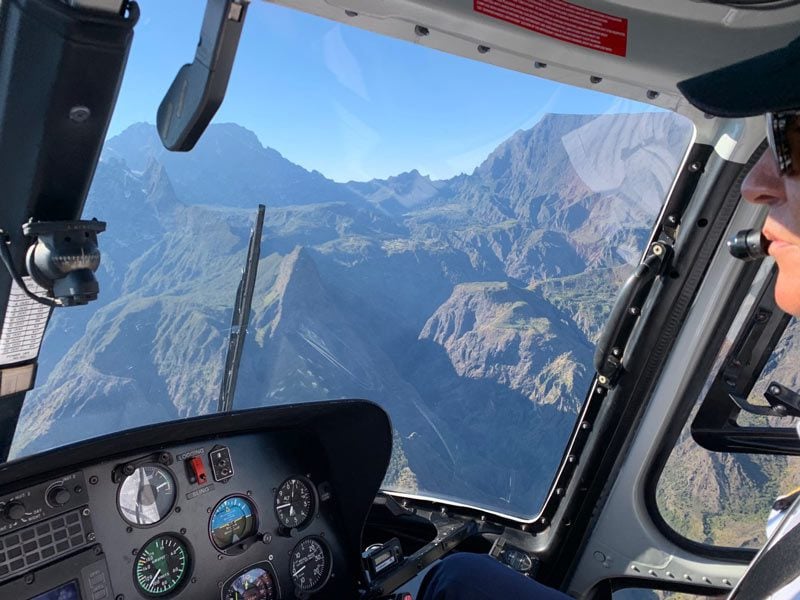
Paragliding
Reunion Island is considered a prime location for paragliding of all kinds, especially in the hills overlooking St. Leu, where you’ll also find most operators.
Additional Excursions
Apart from the above-mentioned activities, other popular guided tours in Reunion Island include thrilling ATV/Quad bike tours, guided island tours (even deep into the cirques), and guided hikes.
Tipping in Reunion Island
As in France, restaurants usually add a service charge to your bill, so tipping isn’t necessary, though adding a few Euros will certainly put a smile on your host’s face if you had an exceptional time. Tipping tour operators or bartenders is also unnecessary, but you can leave some change with the latter to round up your bill.
Is Water Safe to Drink in Reunion Island
In general, water should be safe to drink from the taps in Reunion Island, but it is highly recommended to inquire with your hosts when checking in. Though very tempting, I would not recommend refilling your bottle in streams or pools unless a drinking station has been explicitly set up (like on the trail to the summit of Piton des Neiges).
Staying Safe in Reunion Island
Reunion Island is a very safe and accommodating travel destination. Nonetheless, here are a few things to look out for, in addition to the usual “common-sense” advice that every traveler should keep.
- Sharks: avoid swimming in beaches not designated for swimming as strong currents and shark attacks can occur.
- Driving: in the mountains and the cirques, be cautious of local drivers and keep an extra safe distance. Take sharp turns slowly and drive as slow as possible while honking your own on the numerous stretches of one-lane roads with blind turns (common in the cirques). In these sections of the islands, it’s also best to limit driving in the dark to a minimum.
- Theft: not common but can happen. Be sure to lock your room, store valuables in a safe or inside locked luggage and avoid keeping luggage visible in the car (be sure to have a large enough trunk). If hiking overnight, it’s best to leave your car in secured parking lots.
- Alcohol: locals love their punch and alcohol is generously poured so keep that in mind when ordering. On Sundays, locals love to gather and drink in (shady) local bars. It can be a bit unpleasant walking across such establishments so avoid if possible (cross to the other side and keep your eyes open).
- Mosquitos: it wasn’t that big of a deal when we visited Reunion Island but be sure to have a powerful repellent to avoid getting bitten. Dengue fever is always a possibility in the tropics and can be avoided by applying repellent.
- Volcanic activity: not a danger per se but can hamper your itinerary. Be sure to check the Piton de la Fournaise Facebook page for updates (albeit in French).
- Hiking: pack proper gear if planning on extensively hiking. It’s also always a good idea to have a first aid kit in hand in your backpack.
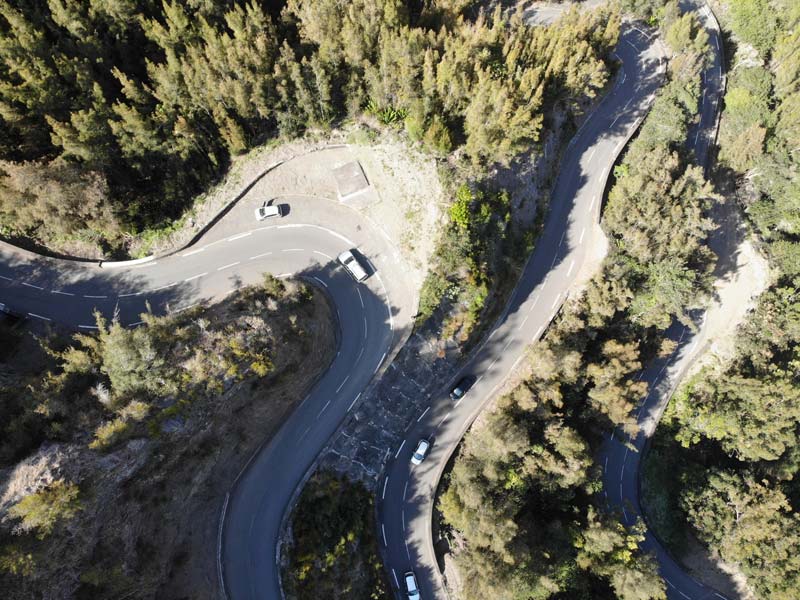
Travel Insurance
Never travel without proper travel insurance. Check out the coverage World Nomads offers travelers and choose the plan best suited for your travel needs.
What to Pack for Reunion Island
A trip to Reunion Island is all about the outdoors and the beaches so having the right gear is a key to success. The island is home to a multitude of microclimates and is a photographer’s heaven. Be sure to review the X Days In Y Packing List for clothing, apparel and photography essentials. Here are a few items to particularly think about.
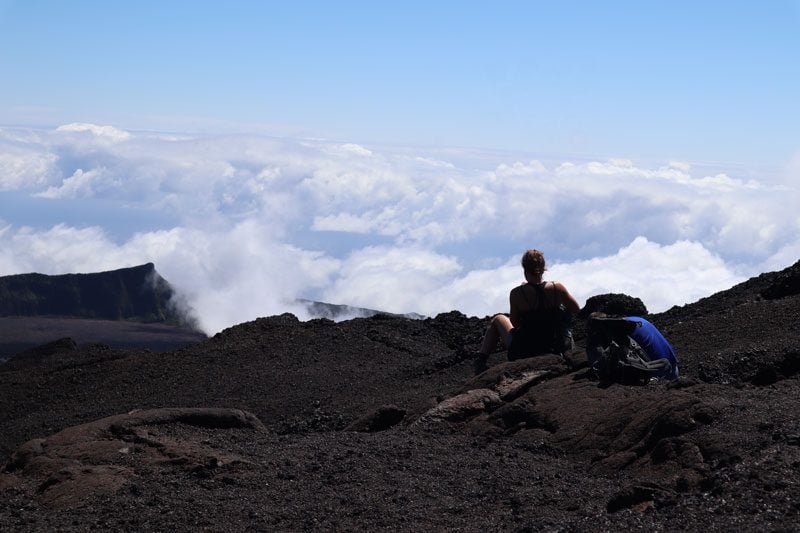
- General: light rain jacket with hood, sun protection, mosquito repellent, beach gear
- Toiletry: overnight hiking cabins but also many bed and breakfasts and guesthouses do not provide soap or shampoo. Packing some laundry detergent is also recommended for long stays.
- Driving: phone charger (compatible with USB and lighter), phone stand (for navigation).
- Picnics: Ziploc bags, minimal picnic gear such as a pocket knife, can opener, alcogel, eating utensils, plus anything else you don’t feel like having to buy on the ground.
- Hiking: poles (optional but very common), water-repelling high shoes, first aid kit, fleece, multiple layers of sweat-repelling clothing.
- For overnight cabin stays: toilet paper, headlamp, sleeping bag or sheets, flip flops, earplugs, eye cover, portable battery (for recharging), laundry bag, full winter gear, cards, hand warmers.
- Photography: camera with a zoom lens, drone, chargers, underwater camera, extra batteries, tripod for night shots.
What to Buy in Reunion Island
In such an exotic destination, it’s expected to find treasures to bring back home with you. Here are a few original ideas, specific to Reunion Island.
- Food and drink: jam, vanilla products, chocolate, coffee, rum, vanilla cream
- Crafts: wooden bowls and wooden ornaments, Damien Clave posters
- Natural products: oil essentials, especially geranium extract
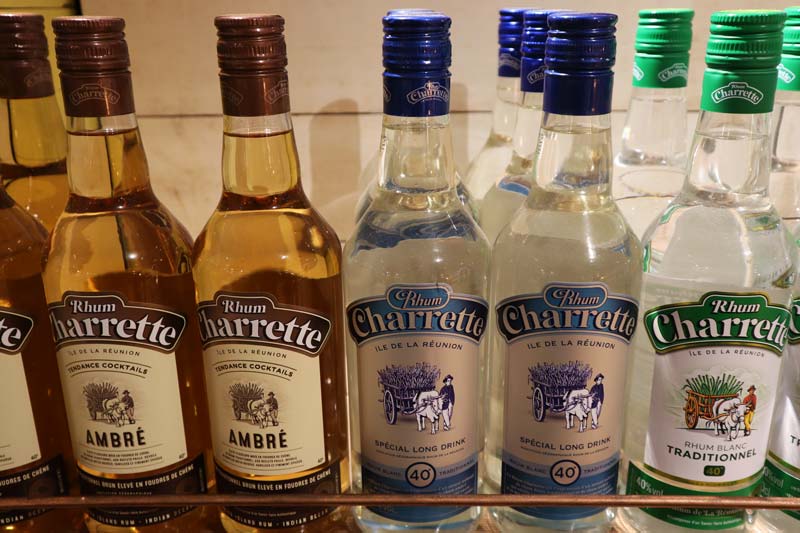
What’s Next?
Now that you have all the essential Reunion Island travel tips, you are ready to plan your island adventure! Be sure to check out the rest of the Reunion Island travel guide collection, including a day-by-day Reunion Island itinerary, the best hikes on the island, and lots more.
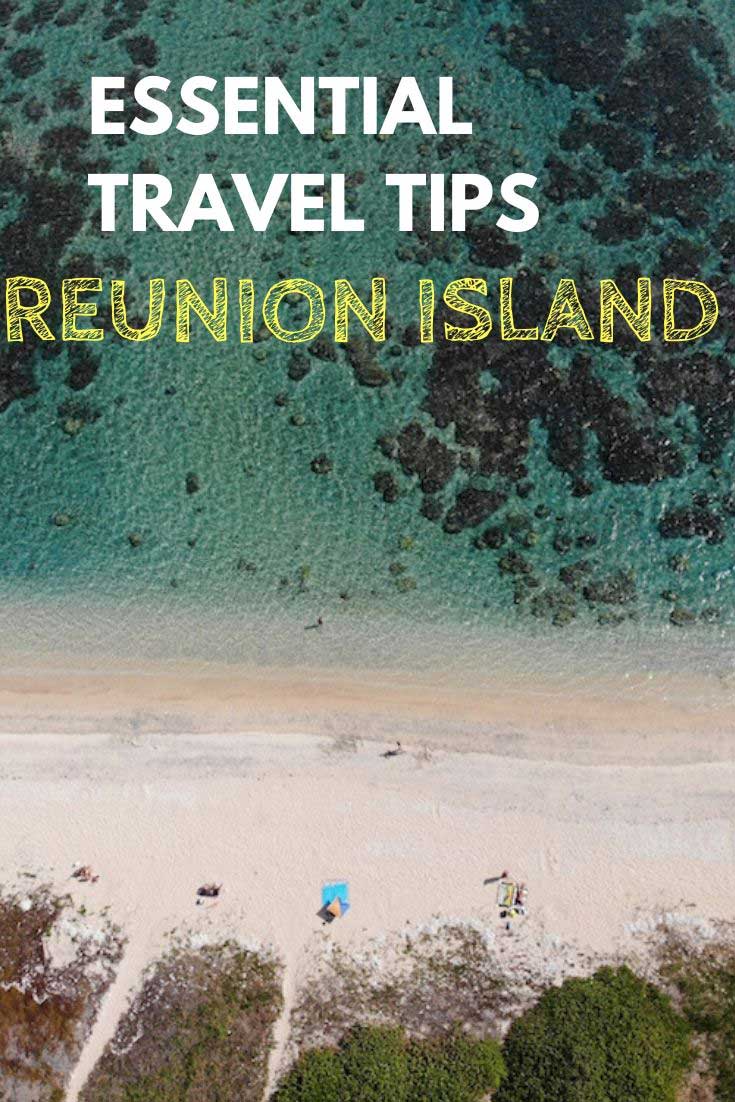
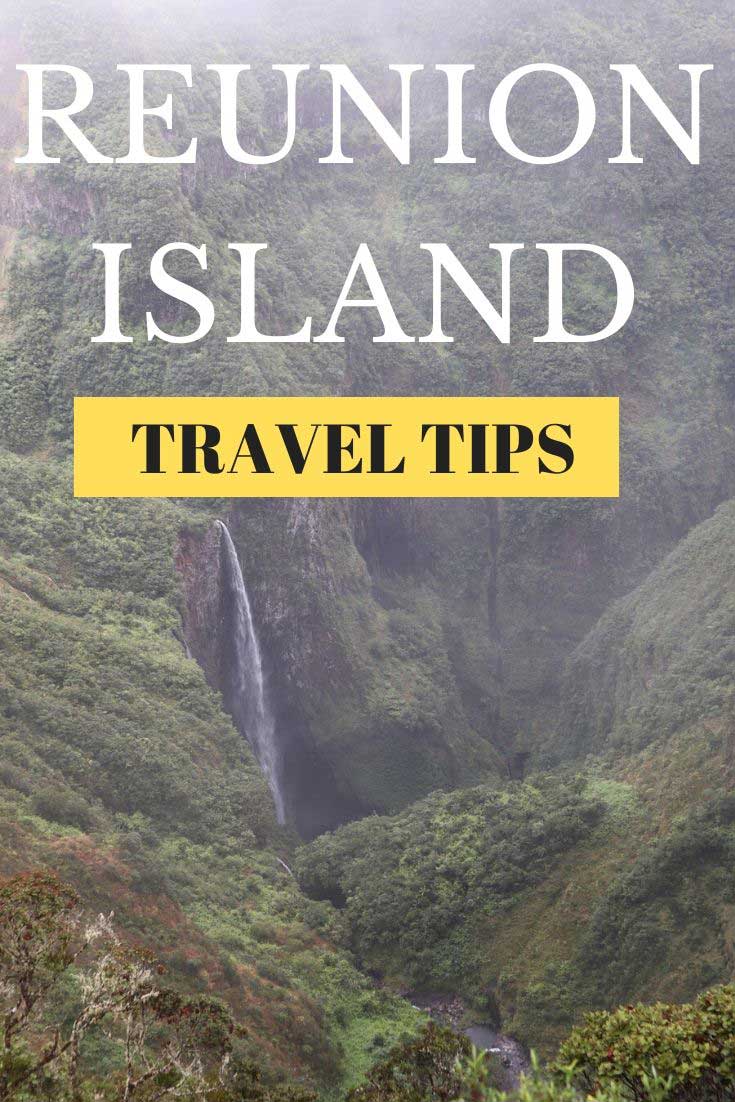
Pin These Images To Your Favorite Boards!
